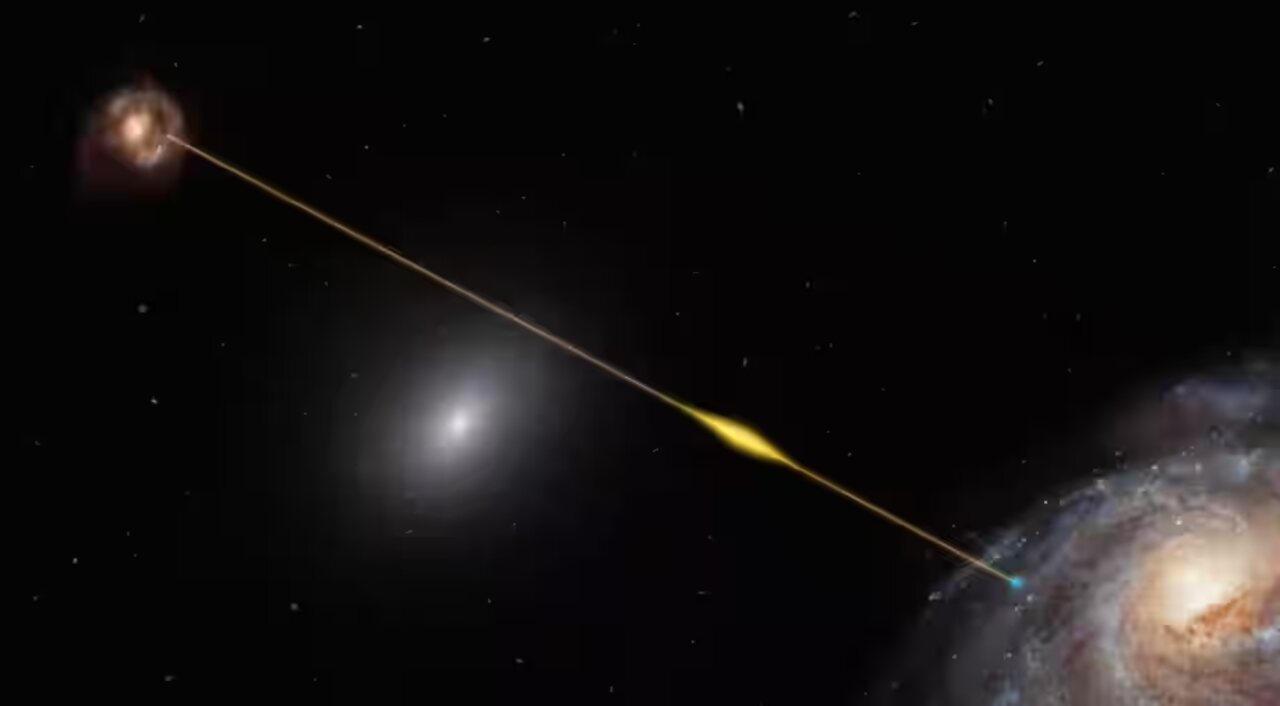Scientists found out where a mysterious radio signal came from, and it took a really long time for the signal to travel to us. This new discovery was shared at a meeting of astronomers in Louisiana, USA.
A group of scientists from Northwestern University in the United States discovered the origin of a very strong radio signal called fast radio burst (FRB), which was detected in 2022. They used pictures taken by NASA’s Hubble Space Telescope to trace the signal back to a group of at least seven galaxies. These galaxies seem to be close to each other and might be getting ready to combine. Such close interactions between galaxies can cause a fast radio burst.
Also Read: Scientists Express Surprise and Concern as Human-Extracted Groundwater Shifted Earth’s Axis Tilt
The scientists say this new information makes us question what we thought we knew about these fast radio bursts. Alexa Gordon, the leader of the research team, explained that without the Hubble’s pictures, it would have been a mystery whether the radio signal came from one big galaxy or a group of galaxies interacting. Understanding these unusual situations helps us learn more about the mystery of fast radio bursts.
Fast radio bursts are quick and powerful radio signals that last only a fraction of a second. They release more energy in that short time than the Sun does in a whole year. The signal they discovered, called FRB 20220610A, is the farthest one recorded and is four times more powerful than the closer ones. Scientists have found around 1,000 of these bursts since 2007, but many of them still have unknown sources.
Also Read: 11 Unsolved Space Mysteries
Before this discovery, scientists thought most fast radio bursts came from a single, irregular galaxy or a group of three galaxies far away. However, in the case of FRB 20220610A, there might be at least seven galaxies very close to each other, so close that they could all fit inside our Milky Way.
One of the researchers, Wen-fai Fong, explained that there are signs these galaxies might be interacting, like trading materials or getting ready to merge. These groups of galaxies, called compact groups, are rare in the universe and are the most crowded structures of galaxies we know.

